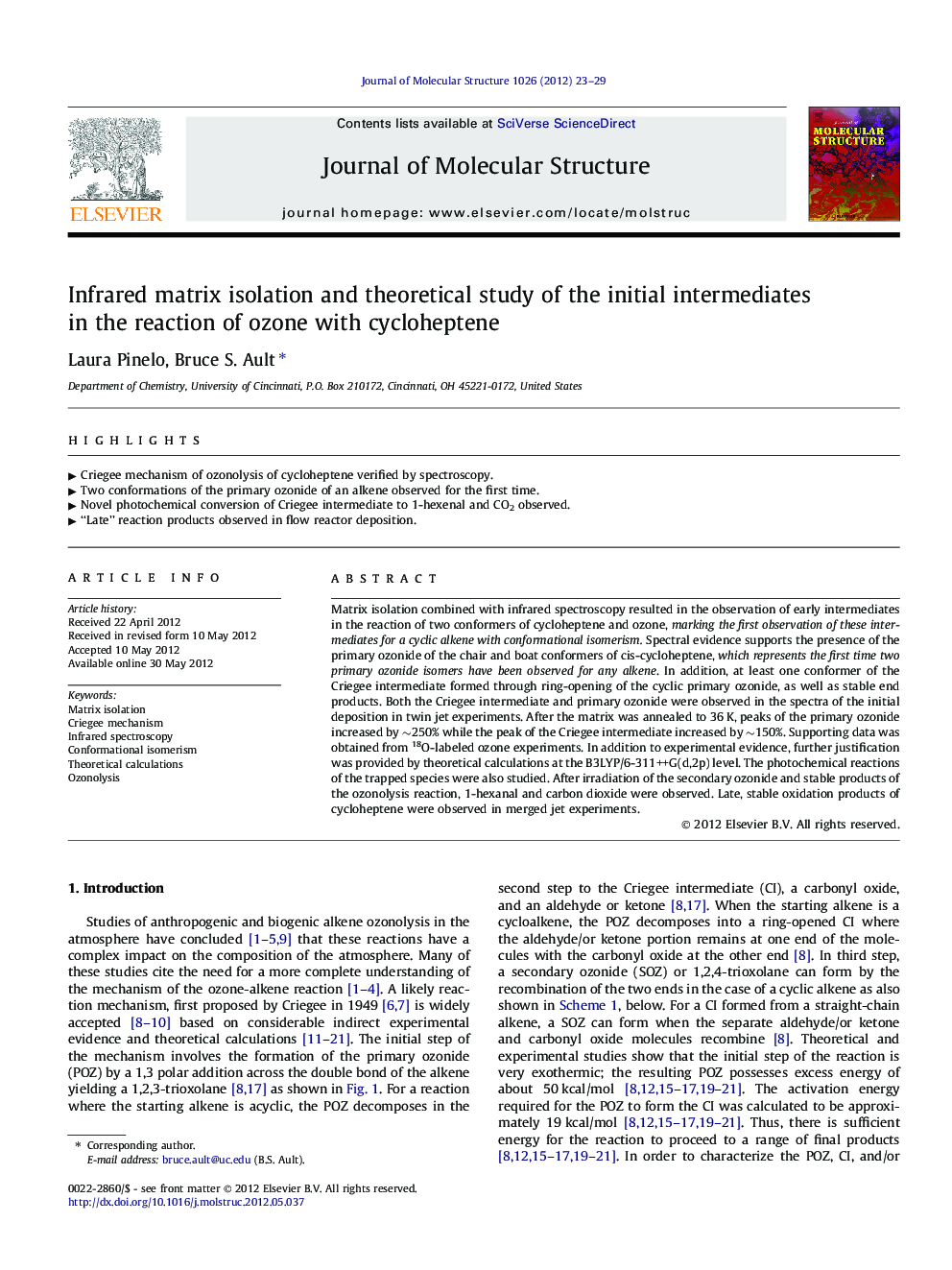| Article ID | Journal | Published Year | Pages | File Type |
|---|---|---|---|---|
| 1409156 | Journal of Molecular Structure | 2012 | 7 Pages |
Matrix isolation combined with infrared spectroscopy resulted in the observation of early intermediates in the reaction of two conformers of cycloheptene and ozone, marking the first observation of these intermediates for a cyclic alkene with conformational isomerism. Spectral evidence supports the presence of the primary ozonide of the chair and boat conformers of cis-cycloheptene, which represents the first time two primary ozonide isomers have been observed for any alkene. In addition, at least one conformer of the Criegee intermediate formed through ring-opening of the cyclic primary ozonide, as well as stable end products. Both the Criegee intermediate and primary ozonide were observed in the spectra of the initial deposition in twin jet experiments. After the matrix was annealed to 36 K, peaks of the primary ozonide increased by ∼250% while the peak of the Criegee intermediate increased by ∼150%. Supporting data was obtained from 18O-labeled ozone experiments. In addition to experimental evidence, further justification was provided by theoretical calculations at the B3LYP/6-311++G(d,2p) level. The photochemical reactions of the trapped species were also studied. After irradiation of the secondary ozonide and stable products of the ozonolysis reaction, 1-hexanal and carbon dioxide were observed. Late, stable oxidation products of cycloheptene were observed in merged jet experiments.
► Criegee mechanism of ozonolysis of cycloheptene verified by spectroscopy. ► Two conformations of the primary ozonide of an alkene observed for the first time. ► Novel photochemical conversion of Criegee intermediate to 1-hexenal and CO2 observed. ► “Late” reaction products observed in flow reactor deposition.
